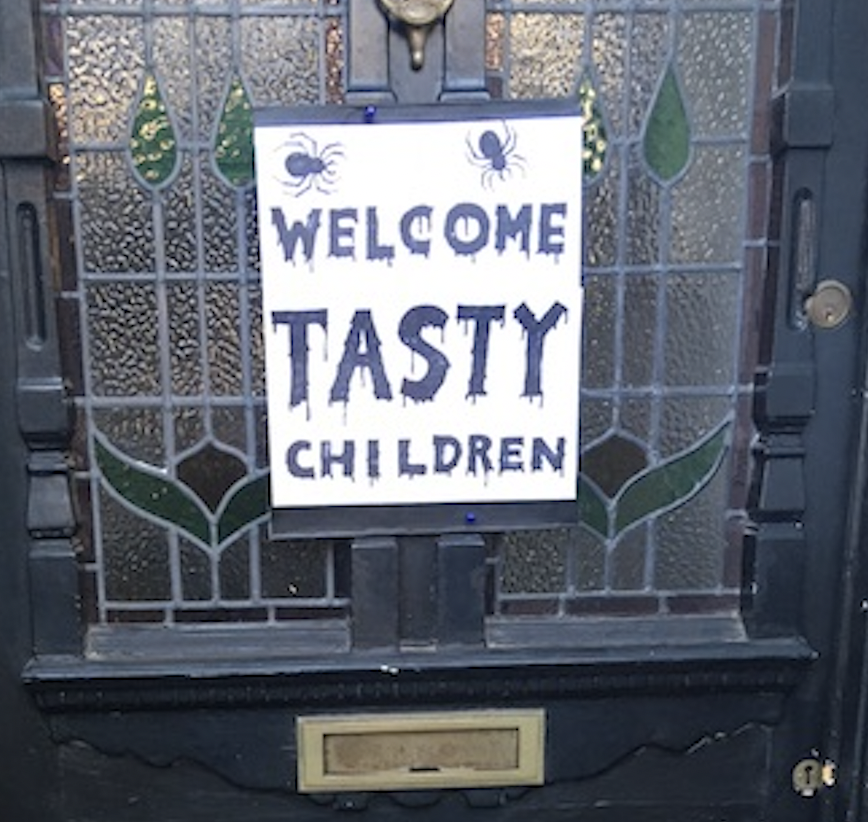
Halloween Knowledge
Cultural Appropriation (Part 2)
Yup I do WITCH very well and come October my sign goes up! I recently wrote a feature for the press association currently circulating on how parent can avoid cultural appropriation. They used some quotes, but here it is in its fullness. To my students here is a previous, more fashion oriented post on cultural appropriation.
In these times of cultural sensitivity towards others, we all need to up our game. Why? Because plenty of us don’t understand the hurt of being unseen, or of having our culture, our beliefs or our authenticity denigrated because we don’t fit in. So, as the Halloween season approaches and children and adult fun-seekers get ready to spook the neighbourhood, now is the time to leverage a valuable tool for progress. Let’s chat about cultural sensitivity and cultural appropriation.
Although, back in the day, my kids impersonated ghosts and ghouls in obviously home-made costumes (a ripped-up shirt with red paint on it) these days the average shopping mall, now capitalising on a seasonal sales push, is heaving with mass-produced Halloween outfit choices. Some of them are culturally insensitive, even offensive. So if we are buying, what makes a good choice? What should we avoid and why must we discuss this?
Well, first, we need to be clear that cultural appropriation: act of adopting certain characteristics or prized symbols and garments of the culturally oppressed is offensive. Those who’s land, freedoms, spirituality, language and culture have been undermined, attacked or stereotyped for a cheap laugh, are already distressed and isolated from the everyday comforts we take for granted. In expecting to dress up in whatever we like, we display our ignorance of historical laws and aggressive exploitative forces which have caused heartbreak and suffering.
In expecting to dress up in whatever we like, we display our ignorance of historical laws and aggressive exploitative forces which have caused heartbreak and suffering .
It's 2022 and when everyone chooses to behave in a culturally competent manner, we all benefit. Unpicking our white and yes heterosexual, cis-gender privilege to acknowledge how dominant culture has shaped our ideas about who is important or relevant, and who is seen and listened to, is one way is holding ourselves accountable. We can all start talking about biases which may have previously rendered us either ignorant or complicit in the perpetuation of hurts towards others.
My own industry for instance, has made a habit of ignorant practice, sending white fashion models up the runway in garments as varied as the Sikh Turban (Gucci), a Native American Headdress (Victoria’s Secret) and false dreadlocks (Marc Jacobs). Designers, as Dolce and Gabbana know only too well, are now rightfully boycotted for cultural disrespect. If they won’t join the conversation, they must learn the hard way. When pop stars play dress up they too must avoid disrespecting other cultures. Lady Gaga wore a variety of hijab face coverings and Burka style garments. Then she sang a raunchy song - an insult given the important expression of modesty for Islamic wearers of these meaningful clothes. Meanwhile Miley Cyrus twerks and raps her way up the charts. Ted talks speaker Aaliyah Jihad reminds us that women of colour, originators of the twerk, have a long history of being sexualised and slut-shamed yet La Cyrus receives praise for empowering women? “This clearly emphasises power structures still in place,” says Jihad, “which prevent the rightful recognition and praise going to minoritised cultures. It’s dehumanising.” And this is the important take home. Her 20-minute talk: Why your Pocahontas costume isn’t OK, will have you crystal clear on the multiple ways cultural appropriation hurts.
But yes, we can show our appreciation, when there is a cultural exchange, which as indicated, is a two-way energy. This is done by knowing about the history of the culture and its struggles, engaging with makers, learning more and supporting small business by buying suitable items of adornment direct, to be worn in a respectful way all year round (rather than dumping a cheap shopping mall purchase after one night’s outing). Authentic black, brown and indigenous business’s need our financial support.
Come October’s seasonal glut of wear-once, reproduction animated character outfits in unsustainable amounts of nylon and plastic, please ask yourself an extra question.
By all means enjoy your (hopefully homemade) fancy dress frolics. But come October’s seasonal glut of wear-once, reproduction animated character outfits in unsustainable amounts of nylon and plastic, please ask yourself an extra question. Does the outfit you or your child is attracted to, caricature or stereotype someone else’s culture or experience? Native American dress, terrorists in Muslim clothing, ceremonial or everyday clothing that is not part of our culture, religious garb in general or anything that sexualises another’s cultural appearance, and of course Blackface: these are obvious no nos.
But perhaps, tempted by the currency of a new raft of characters in our more diverse (at last) approach to story telling, you and your children are excited by personalities from cultures that are not your own. It’s understandable. Parents dressing their white kids up as Moana which brings Polynesian Culture to the big stage or Raya and the dragon, drawing on south east Asian cultures are stepping into a wider territory which requires recognition of the deep and ever present wounds of racism.
What about Coco, the Pixar movie which centers on Día de los Muertos — the festive holiday celebrated in Mexico to honour the dead and features, 12-year-old Miguel (Gonzalez), an aspiring guitarist from a rural Mexican town?
Pixar’s 19th film, is the first to feature a minority character in the lead role, providing stark evidence of the historical deficit of recognition and empathy in non-white lives and their struggles. One could say dominant culture (and yes if we are white that means us) is only just getting to grips with this dearth of representation and the far reaching race inequalities behind it. As an example of long over due, new process this is the first time the filmmakers employed Latino cultural consultants to vet ideas and suggest new ones — upending a long-running studio tradition of strict creative lockdown. Faithfully representing a culture to help us understand more about the lives of others, helps us avoid stereotyping which has been hurtful all this time for the minoritised and the unseen.
When curiosity and humility becomes our assumed position, no-one need feel uncomfortable or defensive because of lack of knowledge. Becoming part of this valuable conversation is simply part of the journey.
And that hurt doesn’t go away overnight. So if it’s not our culture, and we wish to avoid inflicting further hurt, let’s leave well alone and explain our choices to our children, in other words start talking and educating ourselves and our young about cultural appropriation (because studies show many parents prefer to ignore these conversations). And it’s Ok to be honest about our own ignorance previously in this area because actually we have a lot to understand. So, read up on Sugar Skull Makeup in the Refinery 29s feature by Thatiana Diaz if you wish to go ahead. Acknowledge and understand before you adopt.
When curiosity and humility becomes our assumed position, no-one need feel uncomfortable or defensive because of lack of knowledge. Becoming part of this valuable conversation is simply part of the journey.
